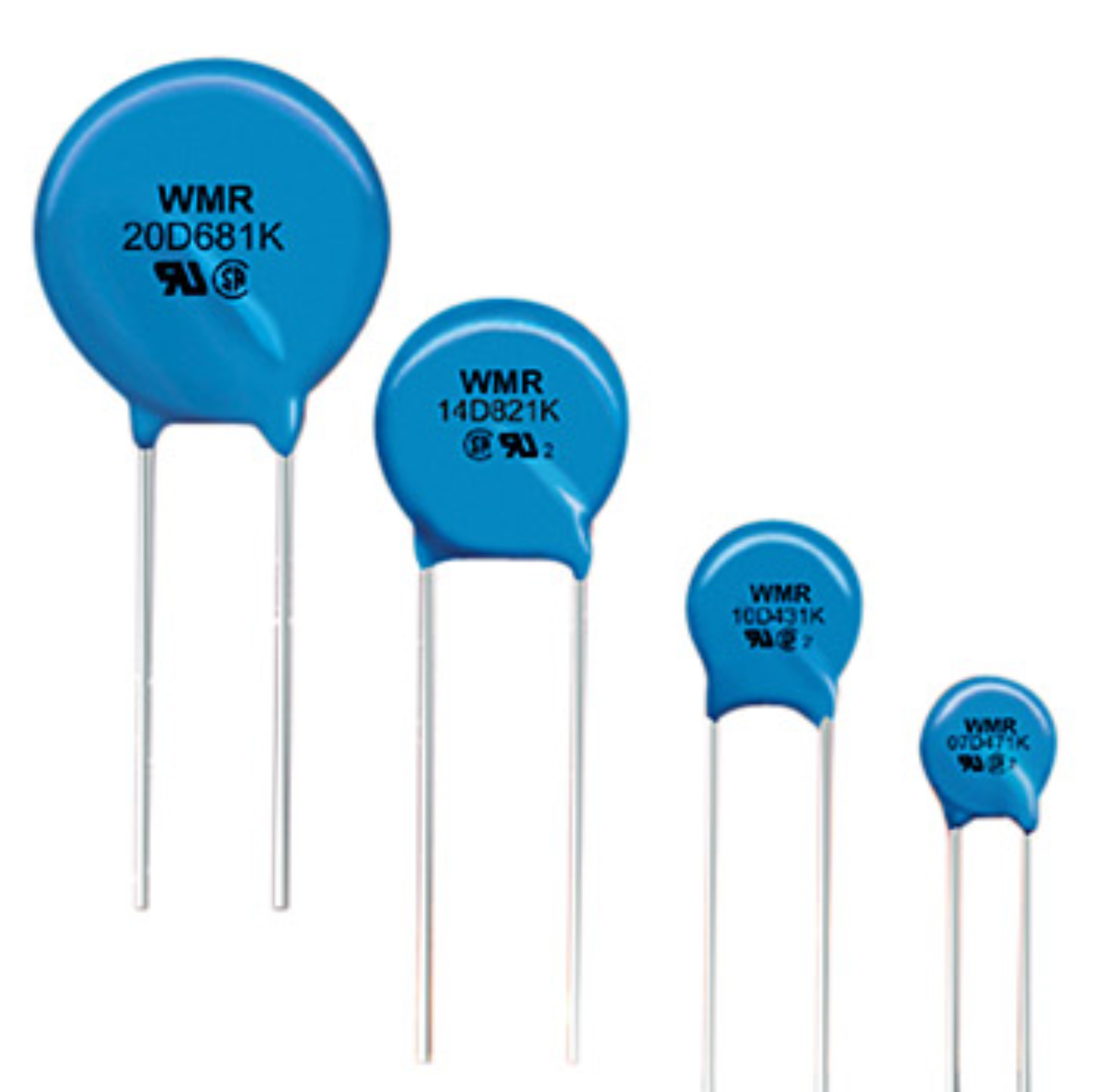Categories
- Varistors, MOVs(1)
- 1
Description and Characteristics of Varistors
Varistors can be viewed as a type of resistor whose resistance varies dramatically with the voltage applied. The defining feature of a varistor is its high electrical resistance under low-voltage conditions, which decreases significantly when higher voltages are present, allowing the varistor to conduct electricity. This property makes them ideal for use in surge protection applications.

Varistors
What is the purpose of varistors?
The varistor is selected to remain non-conductive under the standard voltages applied, but it is designed to activate at a specific threshold voltage above the normal range. Once this threshold is exceeded, the varistor begins to conduct. Consequently, any excessive transient voltages are shunted to the ground and neutralized, safeguarding the device from potential damage.
What are MOVs?
MOVs, referred to Metal Oxide Varistors, are the main type of varistors used globally. They are typically produced using materials like zinc oxide (ZnO), although silicon carbide (SiC) is also employed for its comparable properties.
The processing of making MOVs
During the manufacturing process, the ceramic material, either ZnO or SiC, is compacted into a disc form and then subjected to a high-temperature sintering process, typically around 1200°C. Following this, electrodes and leads are attached, and the device is sealed within an encapsulation.
Varistors come in a variety of configurations, including:
1. Disc-shaped models with axial leads;
2. Block forms featuring screw terminals for high-power applications;
3. Radial leaded devices for diverse installation options.
Features of MOVs
MOVs are designed to protect against brief voltage surges and are not suited for enduring continuous overvoltage conditions. Repeated exposure to surges can cause a gradual degradation in their performance. Each surge encounter can slightly reduce the clamping voltage, potentially leading to the MOV's failure over time. To mitigate such risks, MOVs are often integrated in series with a thermal switch or fuse that activates in the event of excessive current draw. This additional safety measure helps prevent damage to the MOV and the connected equipment.
Frequently Asked Questions
Can a circuit work without a varistor?
Circuits devoid of varistors are prone to erratic behavior, and the risk of damage to circuits and electronic components, leading to short circuits and potential fires, is heightened.
What happens when a varistor fails?
Failed varistors cease to offer protection against excessive voltages. Typically, they fail in a manner that results in a short-circuit condition, which triggers a local fuse to blow.
How to tell if a varistor is bad?
The failure of a varistor is signified by a sudden increase in current at a voltage level that is lower than expected. It is essential to refer to the datasheet of the specific varistor under evaluation for recommended testing procedures and voltage limitations.







